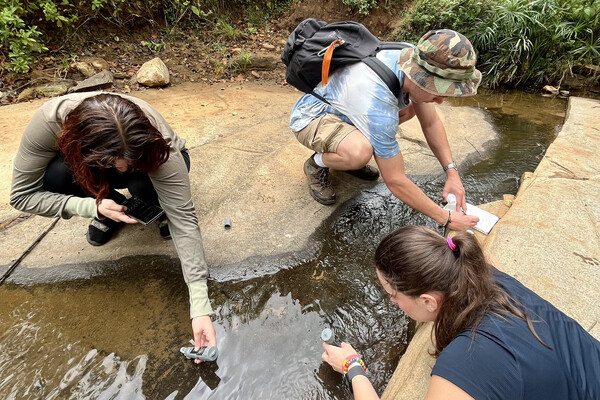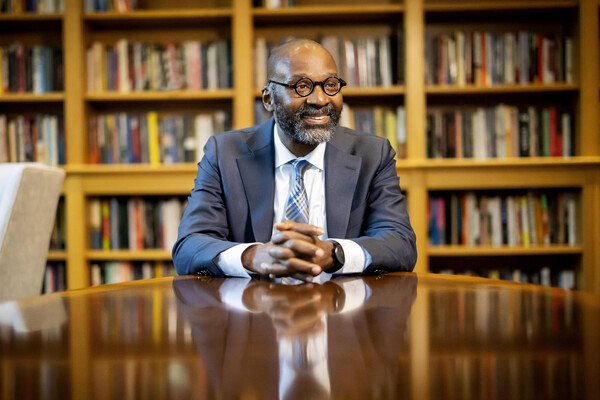
Griffin Pitt, right, works with two other student researchers to test the conductivity, total dissolved solids, salinity, and temperature of water below a sand dam in Kenya.
(Image: Courtesy of Griffin Pitt)
When Philadelphia architects Robert Venturi (Hon’80), Denise Scott Brown (GCP’60,GAr’65,Hon’94) and Steven Izenour (GAr’65) published their landmark analysis of the iconography of the Las Vegas strip, “Learning from Las Vegas,” in 1972, it created a tidal wave of controversy and fresh ideas that architect Susan Nigra Snyder surfs today.
Among her ideas that defy conventional wisdom:
“The road itself is becoming a new civic space.”
“Sprawl is the form of the city today. The car is here to stay and we can deal with it.”
“Function follows form—not the other way around.”
“Manayunk is a mall on a normal street.”
It all started in Las Vegas—now the fastest growing city in America—and that is where Snyder, a lecturer in the Graduate School of Fine Arts, and several colleagues arrived last spring to conduct a studio project with 21 students in architecture, planning and fine arts.
They fell in love with East Fremont Street, once the town’s central artery, where 50 years ago exuberant motels awash with neon competed for customers drawn to the casinos nearby. Today it is a place that one local columnist called “the land that time and prosperity forgot.” But, instead of sagging, derelict exteriors, prostitutes and drug dealers, Snyder saw a neighborhood ripe for re-invention. “This would be the hippest, coolest street in any other city.”
She set her students off in search of what she calls “the Madonna Effect.” They began not with the usual architectural framework, but with a look at contemporary culture. Students studied the underlying ideas of identity and branding and iconic celebrity in order to find what was translatable from media culture to material culture. Just as the “Material Girl” took a crucifix—a religious object—and turned it into a fashion object simply by changing they way we saw it, could East Fremont be transformed into a retro-chic commercial and residential district teeming with businesses, nightclubs, restaurants and young people—a la Soho and South Beach—where locals and tourists mix?
The “re-contextualization” of East Fremont Street from a Main Street where long ago J.C. Penney and Sears rubbed shoulders with barbershops and banks into Main Street Manayunk where upscale boutiques and pricey restaurants abide is the logical next step not only for Las Vegas but for cities across America. The businesses that used to dominate our Main Streets have moved out to places where they get more space and easier access to distribution so they can offer the best price to the widest number of people. “Function follows form,” says Snyder. “That is why Main Street is over.”
In this new regional city, the city is no longer a fixed central place. “We call it ‘auto-urbanism,’” said Snyder, “which is really the autonomy of the individual driver connecting the points that make sense for that day’s activities into what constitutes the city. You make your city, I make mine.”
What can we learn from Las Vegas in 2002? It has all the promise and all the problems that all of our great cities share. It has sprawl, it has traffic, it has decay next to brand-spanking new. Where better to test “the Madonna Effect”? “In Las Vegas there are casinos like Paris, Las Vegas with its own Eiffel Tower and a pint-sized Manhattan at New York, New York. “Las Vegas,” said Sndyer, “is the city that says it’s real because I say it’s real.”
Elaine Wilner

Griffin Pitt, right, works with two other student researchers to test the conductivity, total dissolved solids, salinity, and temperature of water below a sand dam in Kenya.
(Image: Courtesy of Griffin Pitt)

Image: Andriy Onufriyenko via Getty Images

nocred

Provost John L. Jackson Jr.
nocred